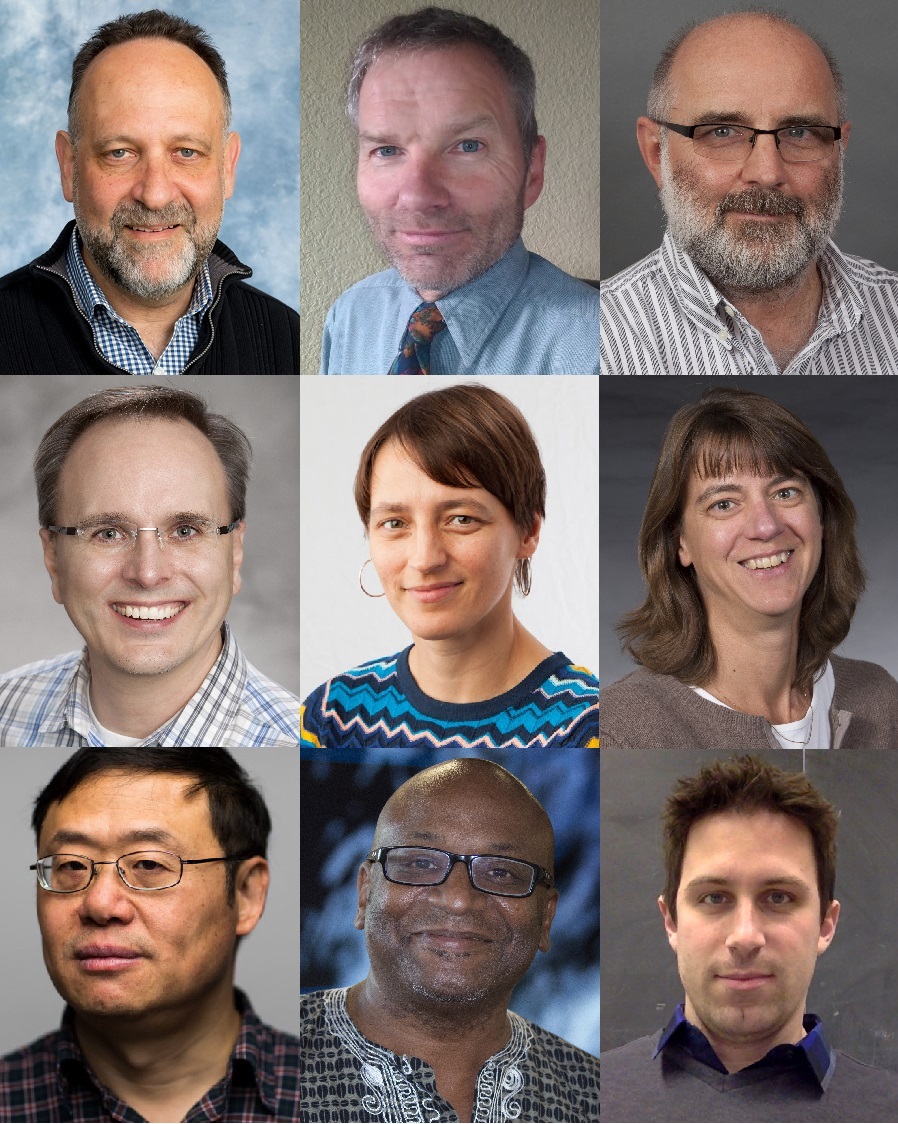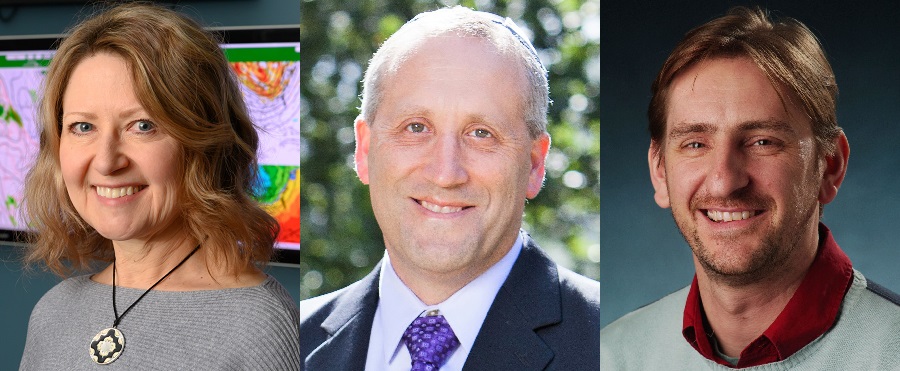ARM Users, ASR Scientists Step Into Spotlight at Annual Meetings
Published: 18 February 2020
The annual meetings of the American Geophysical Union (AGU) and American Meteorological Society (AMS) are more than opportunities for researchers to share their science with their peers. Twelve researchers with recent ties to the Atmospheric Radiation Measurement (ARM) user facility and Atmospheric System Research (ASR) program received honors at the latest AGU and AMS annual meetings.
2020 AMS Awards

At its January 2020 meeting in Boston, Massachusetts, AMS welcomed a new class of 27 Fellows for their contributions to atmospheric or related oceanic and hydrologic sciences. The group included six recent ARM users and ASR scientists:
- Paul J. DeMott, senior research scientist at Colorado State University
- Bart Geerts, professor at the University of Wyoming
- Wojciech W. Grabowski, senior scientist in the National Center for Atmospheric Research’s Mesoscale and Microscale Meteorology Laboratory
- Stephen A. Klein, research scientist at Lawrence Livermore National Laboratory
- Courtney J. Schumacher, professor at Texas A&M University
- Tammy M. Weckwerth, scientist in the National Center for Atmospheric Research’s Earth Observing Laboratory.
Fellow nominations are open to the society’s members. Fellows are elected each year at the AMS council’s fall meeting from a pool of no more than 0.2 percent of all AMS members.
The 2020 annual meeting also honored previous AMS Fellows with ARM/ASR connections.
Qiang Fu, a 2010 AMS Fellow, received the Jule G. Charney Medal. AMS cited the University of Washington professor’s “pioneering contributions to the theory and practice of atmospheric radiative transfer and its critical linkages to climate and climate change.”
The Charles E. Anderson Award went to 2014 AMS Fellow Gregory S. Jenkins for working to promote diversity in atmospheric science. Jenkins is a professor of meteorology and atmospheric science, geography, and African studies at Pennsylvania State University.
Jenkins’ Penn State colleague Matthew R. Kumjian received the Henry G. Houghton Award for early career scientists. Kumjian, an associate professor of meteorology, helps to advance the understanding of precipitation physics with dual-polarization radar observations.
See the full list of 2020 AMS winners.
2019 AGU Awards

Three researchers with ARM/ASR ties received recognition at the December 2019 AGU Fall Meeting in San Francisco, California.
Sonia Kreidenweis of Colorado State University was among 62 new AGU Fellows honored for their career impact on earth and space sciences. AGU limits fellows to 0.1 percent of its membership each year. Kreidenweis is a university distinguished professor of atmospheric science and an associate dean for research in Colorado State’s engineering college.
AGU’s Atmospheric Sciences section recognized Allen H. Goldstein of Lawrence Berkeley National Laboratory and the University of California, Berkeley, and Rainer M. Volkamer of the University of Colorado, Boulder.
Goldstein, a chemist and professor, received the Yoram J. Kaufman Outstanding Research and Unselfish Cooperation Award. The Kaufman award goes to a senior scientist with “broad influence in atmospheric science through exceptional creativity, inspiration of younger scientists, mentoring, international collaborations, and unselfish cooperation in research.”
Volkamer, a chemistry professor with a secondary appointment in atmospheric and oceanic sciences, received the Atmospheric Sciences Ascent Award. The award is for mid-career researchers (eight to 20 years after earning their highest degree) who show excellence and leadership in atmospheric and climate sciences.
View the complete list of 2019 AGU section awardees.
Nominate Your Peers
AGU section award nominations for 2020 are open until April 15. Nominations for union honors are due March 15. The 2020 AGU Fall Meeting is December 7 to 11 in San Francisco.
The deadline to submit 2021 AMS nominations is May 1, 2020, for awards, fellows, lecturers, and honorary members. The next AMS annual meeting is January 10 to 14, 2021, in New Orleans, Louisiana.
Keep up with the Atmospheric Observer
Updates on ARM news, events, and opportunities delivered to your inbox
ARM User Profile
ARM welcomes users from all institutions and nations. A free ARM user account is needed to access ARM data.


















